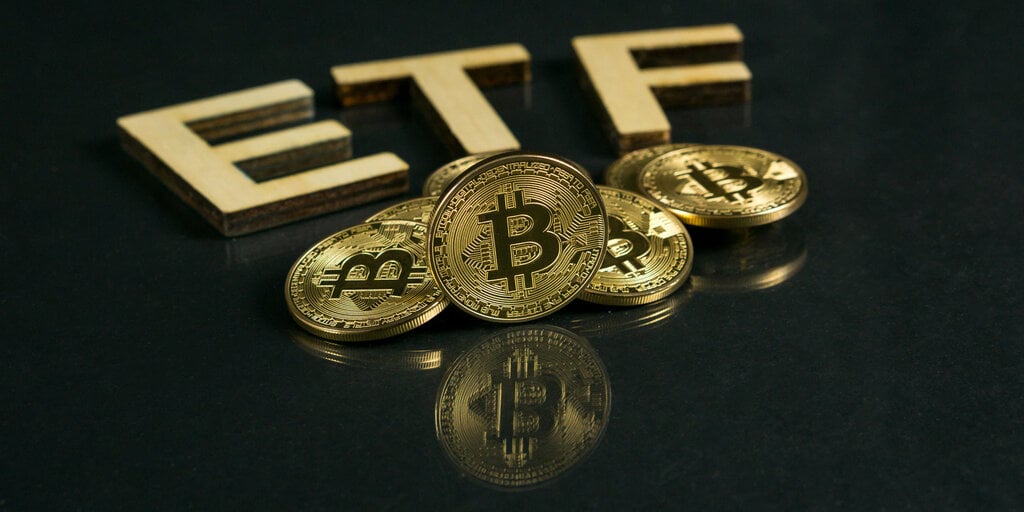Bitcoin ETFs Are Booming as BlackRock Shatters Records - Decrypt
10/26/2024 16:42
Demand for Bitcoin and Ethereum exchange-traded funds (ETFs) is making other recent ETF launches look small by comparison.
In case it wasn’t already obvious, Bitcoin exchange traded-funds (ETFs) are hot—with demand for the products smashing all expectations.
Data from Bloomberg shows that of the 575 ETFs launched this year, 14 of the top 30 products have been either new Bitcoin or Ethereum funds, with the top four spots owned by Bitcoin funds.
And in the past four years, of the 1,800 ETFs that started trading during that span, BlackRock’s iShares Bitcoin Trust is the biggest by far in terms of inflows, the data shows.
575 ETFs have now launched in 2024...
*14 of top 30* by inflows are either spot btc or eth ETFs.
Includes 6 of top 10.
There are also 2 MSTR-related ETFs in top 30.
Crypto appetite from tradfi is real. pic.twitter.com/DmD6f5zJ1P
— Nate Geraci (@NateGeraci) October 23, 2024
ETFs are popular investment vehicles that trade on stock exchanges. They allow investors to buy and sell shares that track the price of anything from the S&P 500 and gold to Bitcoin and real estate firms.
In January, the Securities and Exchange Commission (SEC) approved the Bitcoin products, allowing 10 such funds to start trading on American stock exchanges after a decade of denials.
The investment vehicles have been widely popular, attracting billions of dollars in months in flows. Last week, they collectively crossed the $20 billion mark—smashing expectations by taking just 10 months to do what gold ETFs did over five years.
The reason for the fast money, according to Bloomberg Intelligence ETF research analyst James Seyffart, is partly down to investors who had wanted to invest in Bitcoin for some time, but didn't have a safe or easy way before the approval of the ETFs. Now that the ETFs are trading, that demand is rapidly entering the market.
“I think it was partly pent-up demand,” he told Decrypt. “But it’s also new demand as people are learning more.”
He added that traditional financial institutions are interested in the products too—including hedge funds involved in futures trading. “That has helped improve flows and demand,” he said, adding that hedge funds have been going long on the ETFs and then selling the futures contracts.
Massive institutions—including Morgan Stanley and Goldman Sachs—now have exposure to Bitcoin via the new products. The price of Bitcoin even hit a new all-time high in March following their approvals.
But the Ethereum counterparts haven’t had as much luck thus far. The SEC approved the ETFs for the second-biggest cryptocurrency—reluctantly, it appeared—in May. They haven’t done nearly as much in terms of inflows since trading began in July.
This is partially because Grayscale’s Grayscale Ethereum Trust (ETHE) previously operated like a closed-end fund rather than an ETF before July. Its subsequent conversion means that investors who previously had cash locked up in the fund have fast been redeeming shares—leading to massive outflows.
So far, $3 billion has left the fund, bringing the total flows for all nine Ethereum ETFs currently trading to negative $472.7 million, Farside data shows.
However, that doesn’t mean demand won't pick up. Investors have thrown cash at the other products, and that could mean a turnaround is on the horizon.
“It’s just that the outflows from ETHE are overwhelming the inflows to these other [Ethereum] ETFs,” added Seyffart. “For now.”
Edited by Andrew Hayward
Daily Debrief Newsletter
Start every day with the top news stories right now, plus original features, a podcast, videos and more.